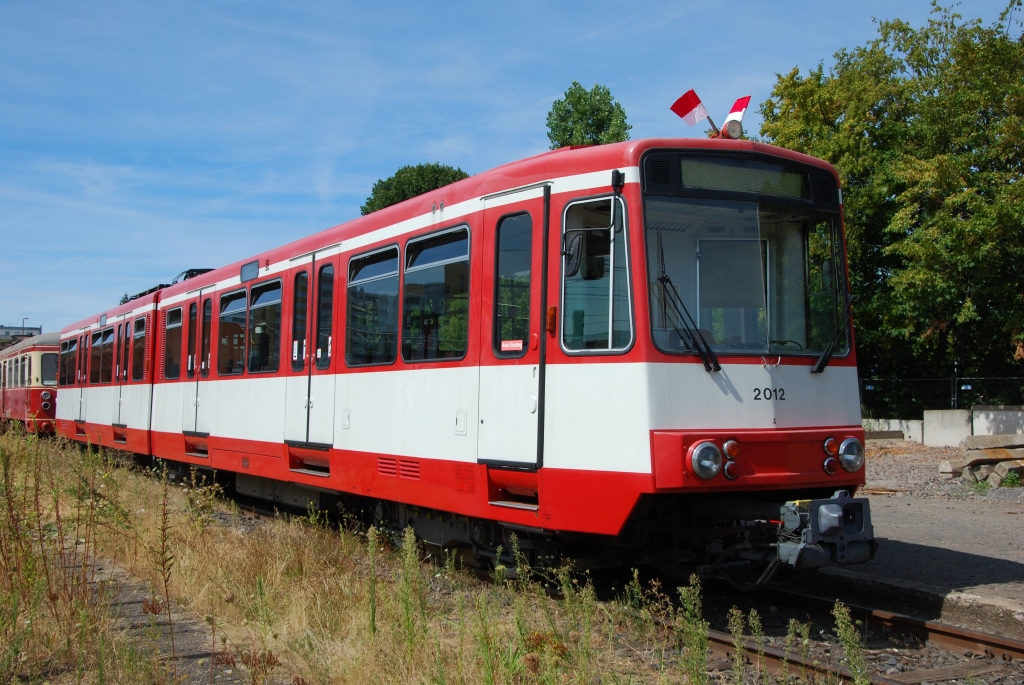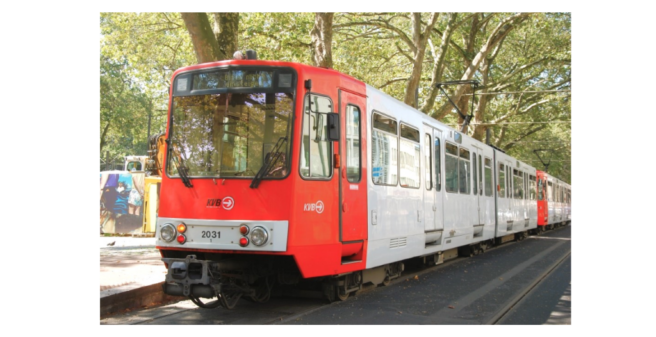
At the beginning of the 1970s, the state government of North Rhine-Westphalia had grand plans for local public transport by rail in Germany’s largest conurbation on the Rhine and Ruhr – from Bonn in the south via Cologne, Düsseldorf, Duisburg, Oberhausen, Mülheim, Essen, Gelsenkirchen, Herne and Bochum to Dortmund in the north-east of this region. A uniform rapid transit network was to be created, with uniform railways for the entire system, all of which were to run on a uniform gauge (standard gauge).
A Wagen: never built
A vehicle specially developed for this network was to run on this uniform network, the so-called “Stadtbahnwagen A” or “A-Wagen”. It was to be a double light rail car consisting of two fixed-coupled railcars. There were construction plans.
But alas, in the meantime Cologne, the largest city in the region, had already built and opened the first sections of an under-pavement tramway, and these were of course to be integrated into the planned rapid transit network. And these were still designed for the use of conventional tram vehicles, especially the north-south line under the city centre from Ebertplatz via Dom / Hauptbahnhof, Appellhofplatz and Neumarkt to Barbarossaplatz. And it turned out that the A-car could not run on these oldest Cologne lines, it simply did not fit in.
B-Wagen
So another vehicle, a “compromise vehicle” so to speak, had to be found. The “A-Wagen” was shortened to a length of 28 metres, and so that it could also negotiate narrower curves, it was designed as a six-axle articulated light rail car for two-directional operation. Thus the “Stadtbahnwagen B”, also known as the “B-wagen”, was born.
In 1973, Düwag completed the first three prototypes. Two of them went to Cologne (here Tw 2001 and 2002), the third as Tw 7351 to Bonn. As early as 1974, the first series-production vehicles went to Bonn (Tw 7451 to 7467), and in 1975 / 1976 Düwag delivered B-wagons to Essener Verkehrs AG (EVAG) and the “Betriebe der Stadt Mülheim an der Ruhr” (BtMH) for the underground line 18 (Essen – Mülheim), which was about to be opened there. Bonn received a number of B-Wagen simultanously.
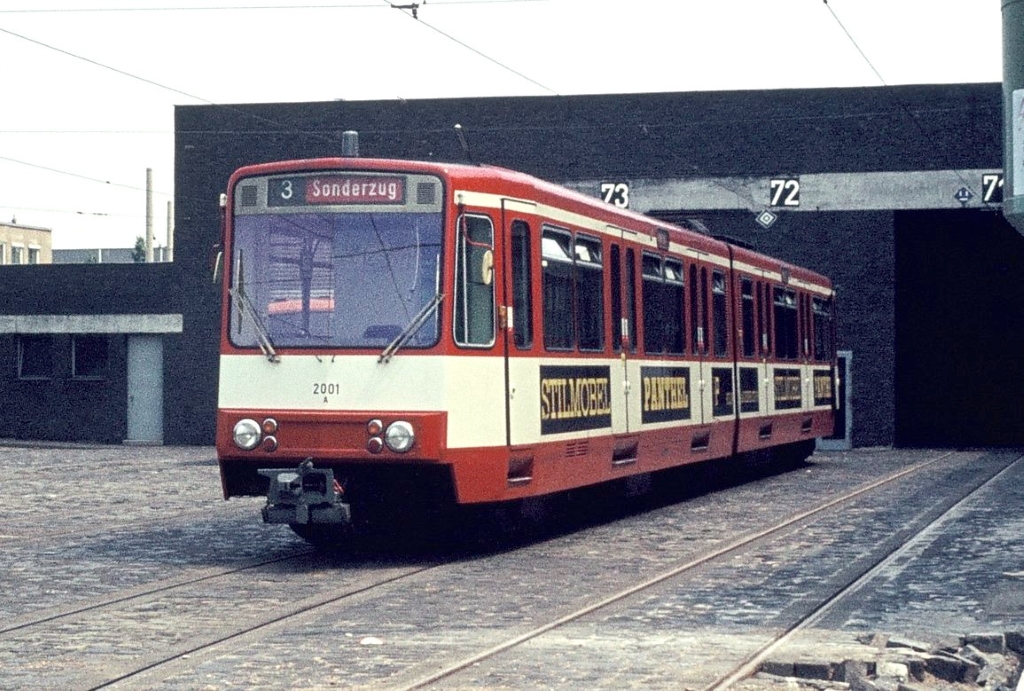
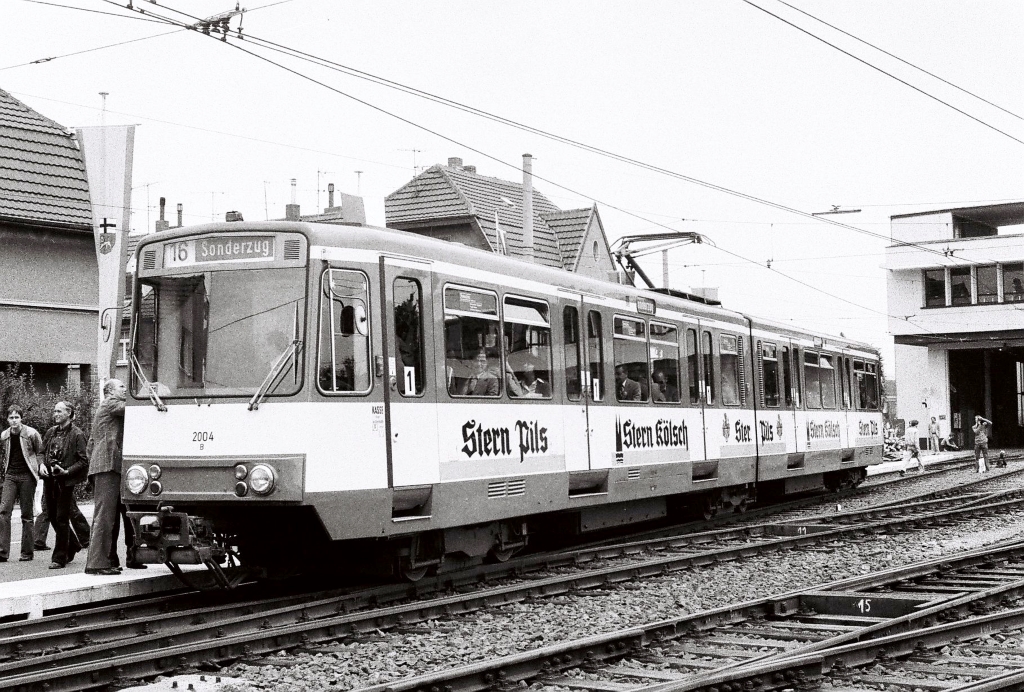
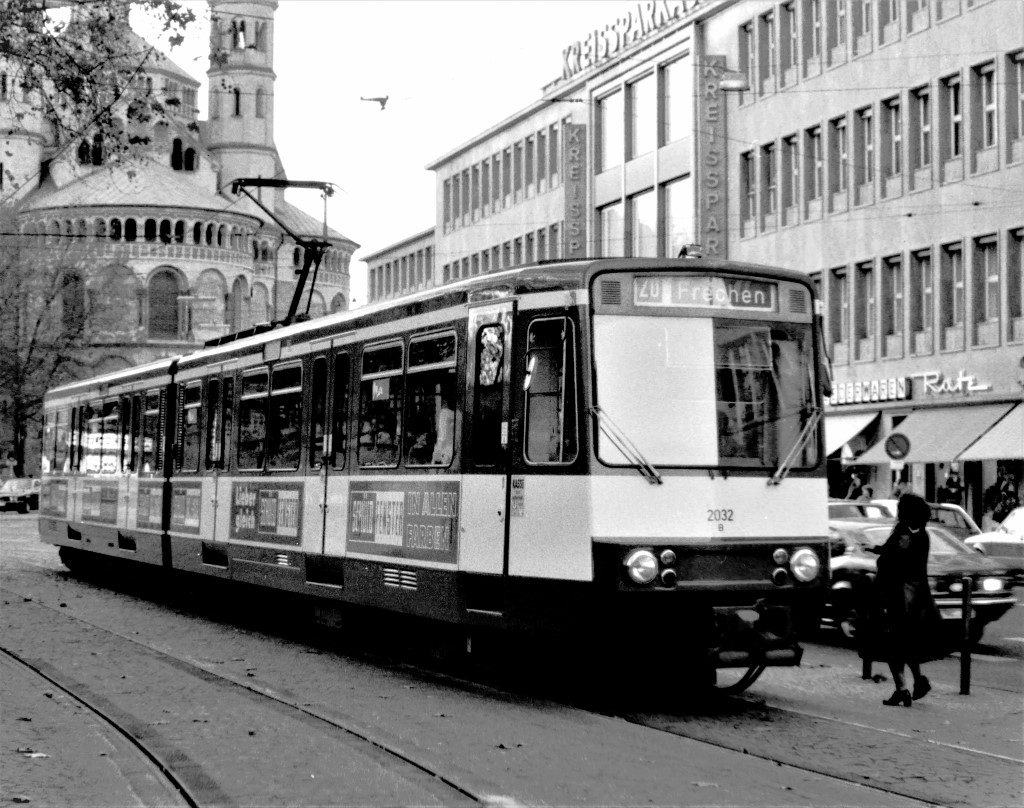
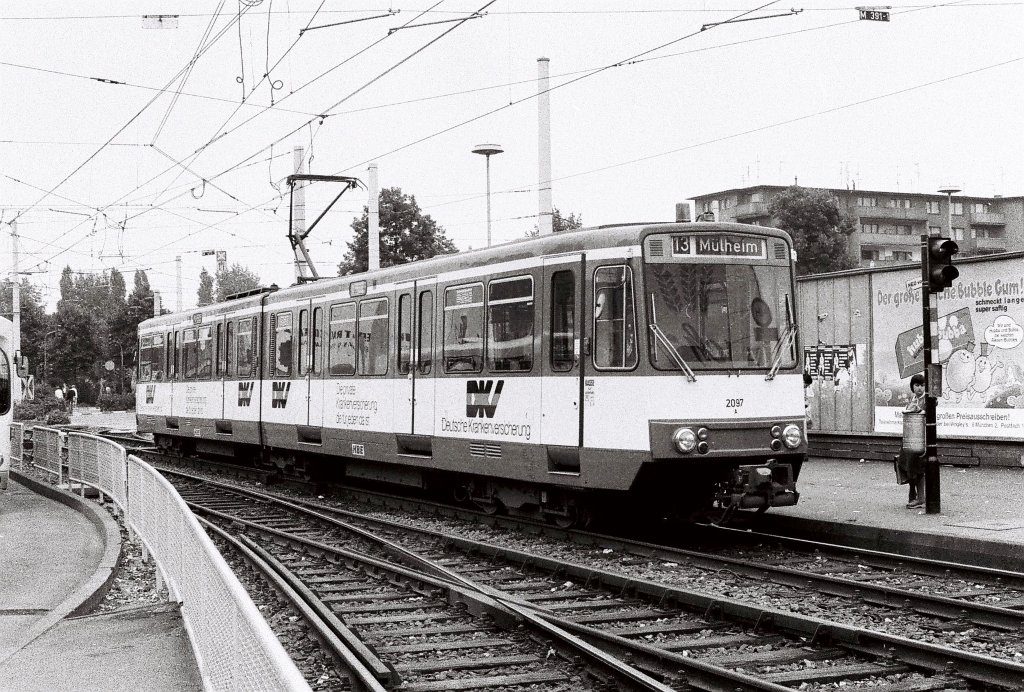
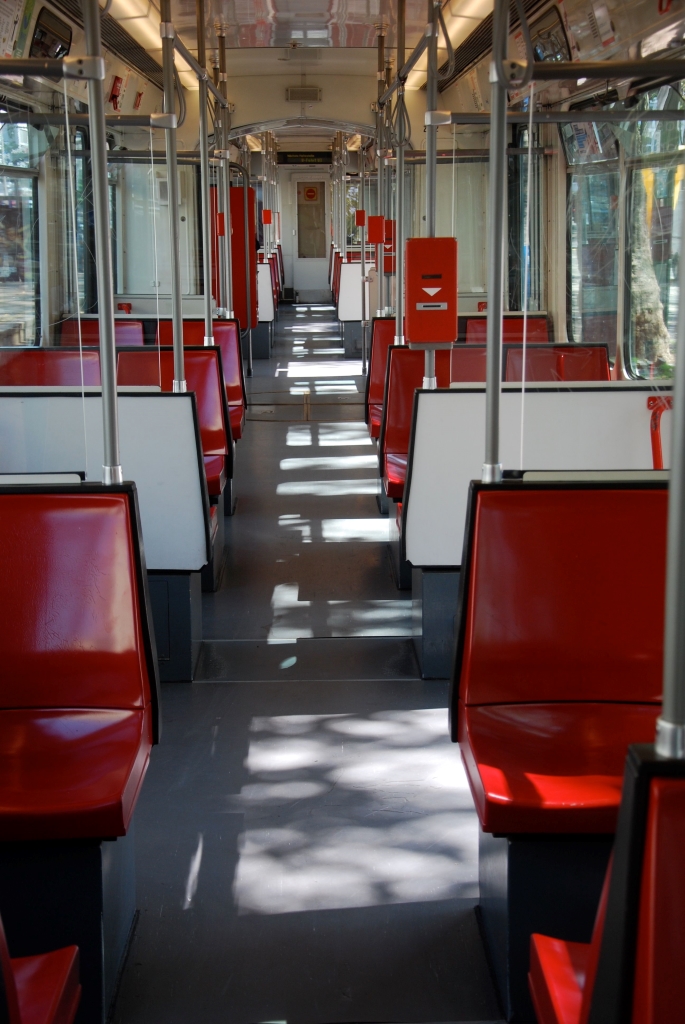
Cologne received its first B-Wagen from the production run in 1976 (Tw 2003 to 2029), 1977 (Tw 2030 to 2049 and 2095 to 2099, the latter for the then still existing Köln – Bonner Eisenbahnen KBE), and 1978 (Tw 2050 to 2054). Almost all of them were taken out of service from 2007, some could be sold to Istanbul’s transport company IETT, where they are still in service today. Now, at the end, only four trams of the first B-car generation were still in service in Cologne with the trams 2031, 2032, 2035 and 2049, but they were really needed. Until now, enough new light rail vehicles of the type HF 6 had been delivered by Alstom and were in service on the line.
The Farewell Trip
On 18 August 2023, Cologne’s oldest B-Wagen were ceremoniously retired from regular service with a “farewell run” of a train consisting of railcars 2031 and 2032. The journey led from the West depot (Scheidtweilerstraße) to Neumarkt in the city centre. Here, KVB CEO Stefanie Haaks handed over a symbolic bowl to the head of the KVB driving school, Frank Faßbender, and driving instructor Markus Blüggel. This is because the four old B- Wagen will neither be scrapped nor sold. Rather, they will remain with the KVB as driverless training cars. Stefanie Haaks: “Training on these old trams makes a lot of sense. There are still few electronics in them, they don’t yet have many modern elements that relieve the driver. And so the learner driver learns to completely control the car himself in every situation.” In general, KVB boss Haaks praised the fact that the construction of the vehicles is very solid. Nevertheless, there are increasingly no more spare parts for them.
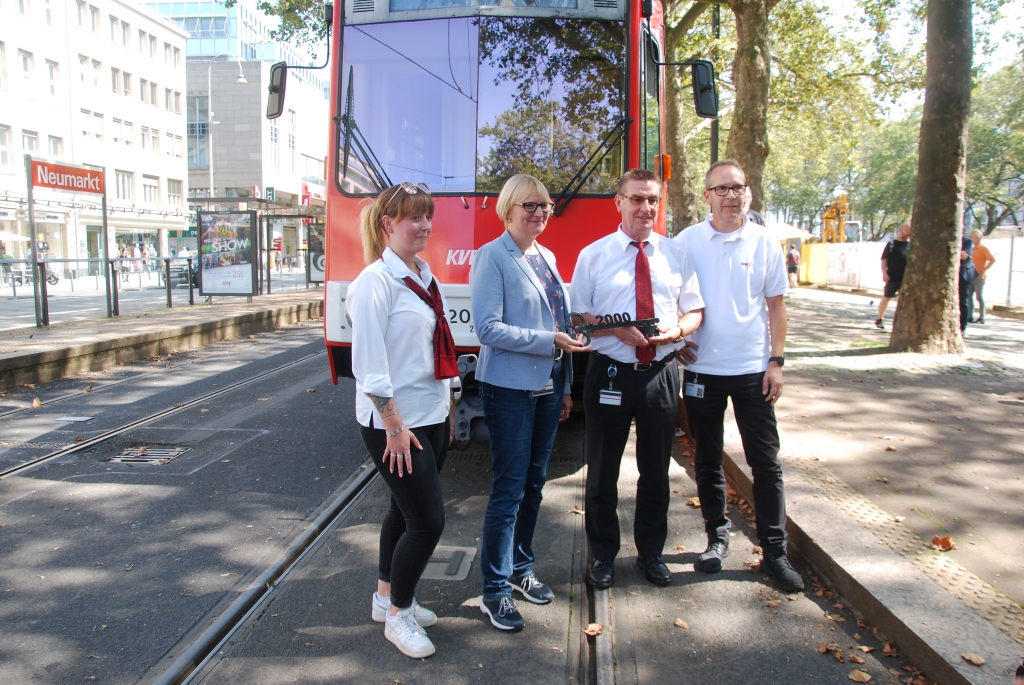
No “rebuilt as new” as in Bonn
Unlike their Bonn brothers from the same years of construction, many of which were thoroughly rebuilt by SWB (others were sold to Dortmund), Cologne’s oldest B-Wagen of the 2000 series have basically always remained in their original condition. The most obvious change: originally, the cars had red leatherette seats. The “bad guys” were too fond of breaking them (vandalism), and so the KVB decided to replace the imitation leather seats with imitation fabric bucket seats – which are dark red again. There was also a “second production” in Cologne, but it was for much younger vehicles, namely the B-Wagen of the 2100 series from 1984 and 1985. They came from the body renewal with new service numbers of the 2400 group. And while in Bonn the light rail cars in the “second production” kept their numbers, in Cologne it is impossible to tell which 2400 used to be which 2100.
